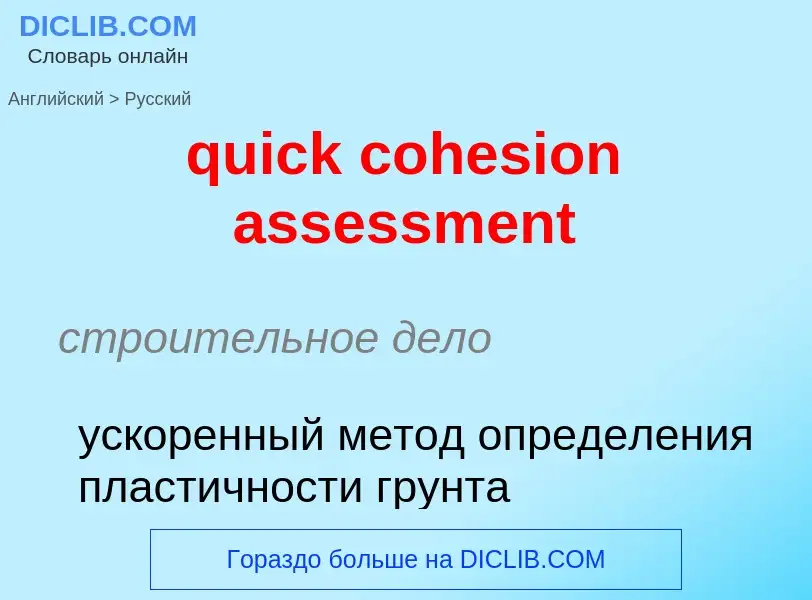Translation and analysis of words by ChatGPT artificial intelligence
On this page you can get a detailed analysis of a word or phrase, produced by the best artificial intelligence technology to date:
- how the word is used
- frequency of use
- it is used more often in oral or written speech
- word translation options
- usage examples (several phrases with translation)
- etymology
quick cohesion assessment - translation to russian
строительное дело
ускоренный метод определения пластичности грунта (раскатыванием в шнур)
оценочный центр (пункт с группой арбитров, решающих вопрос о профессиональной пригодности кандидатов)
Definition
Wikipedia
In computer programming, cohesion refers to the degree to which the elements inside a module belong together. In one sense, it is a measure of the strength of relationship between the methods and data of a class and some unifying purpose or concept served by that class. In another sense, it is a measure of the strength of relationship between the class's methods and data themselves.
Cohesion is an ordinal type of measurement and is usually described as “high cohesion” or “low cohesion”. Modules with high cohesion tend to be preferable, because high cohesion is associated with several desirable traits of software including robustness, reliability, reusability, and understandability. In contrast, low cohesion is associated with undesirable traits such as being difficult to maintain, test, reuse, or even understand.
Cohesion is often contrasted with coupling, a different concept. High cohesion often correlates with loose coupling, and vice versa. The software metrics of coupling and cohesion were invented by Larry Constantine in the late 1960s as part of Structured Design, based on characteristics of “good” programming practices that reduced maintenance and modification costs. Structured Design, cohesion and coupling were published in the article Stevens, Myers & Constantine (1974) and the book Yourdon & Constantine (1979); the latter two subsequently became standard terms in software engineering.

